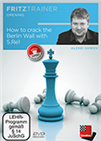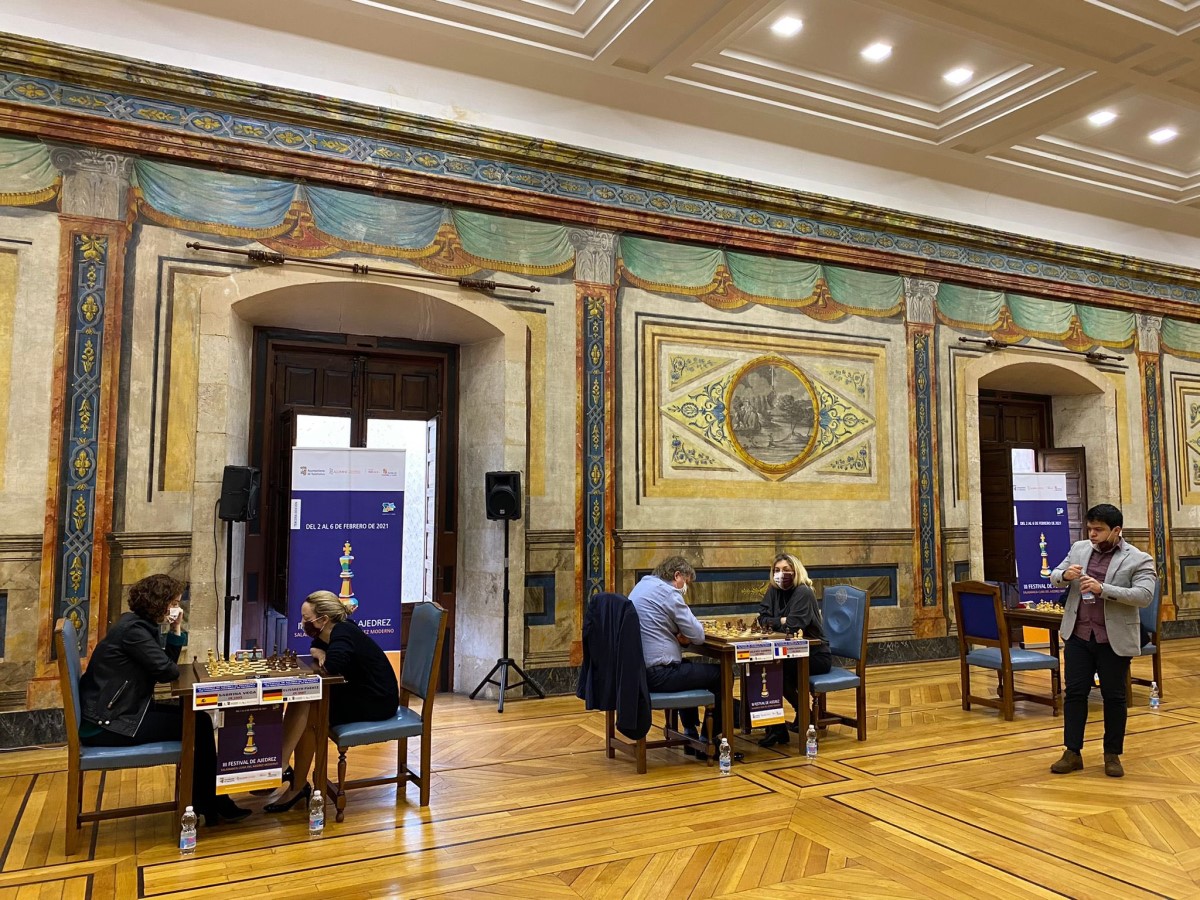Iturrizaga takes down Topalov
The seven rounds of the Salamanca rapid tournament were scheduled to take place through four days, which meant one of these days would see a single round of action — i.e. the fifth round, on Friday. Luckily, the amount of excitement seen in round 5 easily equalled two rounds’ worth of chess.
 Ever since the Kasparov-Kramnik WCh match (London 2000) players with the white pieces have been breaking their teeth biting on the Berlin Wall in the Ruy Lopez. The situation from White’s point of view has become precarious – ducking it is equivalent to capitulation, because in all alternative variations to the Berlin endgame White gives up from the start on the struggle for an opening advantage. White has to find ways to crack open Black’s defence. There is hardly any other grandmaster of his class who is as well known for his uncompromising and creative play as the Latvian Alexei Shirov.
Ever since the Kasparov-Kramnik WCh match (London 2000) players with the white pieces have been breaking their teeth biting on the Berlin Wall in the Ruy Lopez. The situation from White’s point of view has become precarious – ducking it is equivalent to capitulation, because in all alternative variations to the Berlin endgame White gives up from the start on the struggle for an opening advantage. White has to find ways to crack open Black’s defence. There is hardly any other grandmaster of his class who is as well known for his uncompromising and creative play as the Latvian Alexei Shirov.Alexei Shirov, author of the highly acclaimed “Fire on Board” games collection, was in trouble strategically against Almira Skripchenko when he decided to go all-in on the kingside, giving up a bishop in order to open up lines around the opposite king. As so often happens, it was proven that computer evaluations do not tell the whole story — especially in a rapid game — as Skripchenko failed to find the precise defensive recourses to deal with Shirov’s threats. A 31-move victory would eventually leave the Spaniard in the sole lead.
Another sharp victory was achieved by Elisabeth Paehtz, who defeated Sabrina Vega in a 32-move game from the black side of a Sicilian. David Anton’s victory over Nurgyul Salimova was not without tactical shots, while Eduardo Iturrizaga took down former co-leader Veselin Topalov by showing good endgame technique against his experienced opponent (do not miss Karsten Müller’s excellent analysis of the endgame below).
The tournament will come to an end on Saturday, when the two last rounds will take place starting at 16.00 CET. Iturrizaga and Anton are currently a half point behind the leader. Will either of them manage to catch up with the legendary player from Riga?

It was an exciting round in Salamanca
Much like Salimova in round 3, Skripchenko decided to fight fire with fire against Shirov. The French IM, in fact, was slightly better out of the opening and had strong play on the queenside and in the centre when her opponent decided to radically change the nature of the battle:
 Alexei Shirov shows on this DVD how White can develop pressure and seize the initiative with 5.Re1 against the Berlin Wall.
Alexei Shirov shows on this DVD how White can develop pressure and seize the initiative with 5.Re1 against the Berlin Wall.
White could have continued the positional struggle but instead decided to burn all bridges and go for a kingside attack — 25.Bh6 gxh6 26.Rde1 Bf8 27.exf6:
In hindsight, the engines’ suggestions of 27...Qa7 or 27...Qc7 make perfect sense, but having Shirov across the board with little time on the clock can be intimidating — Skripchenko played 27...Rd6, which does not give up his advantage, but then she failed to react correctly after 28.f7+ (this would not have been possible with the black queen on the seventh rank) Kxf7 29.f6:
29...d4 was the losing mistake (29...Nc7 was the only move that kept Black’s advantage), as Shirov quickly found 30.Qd3 Nxf6 31.Qxh7+:
Fortune favours the brave — at least when Shirov is the one taking the risks.

Alexei Shirov facing Almira Skripchenko
A similar story was seen in Vega v Paehtz. White had a good position out of a Sicilian, but allowing her opponent’s dark-squared bishop to come to live was a grave mistake:
 The continuous stream of new ideas in the Sicilian makes 1..c5 the most popular answer to 1.e4. On this DVD I do give an introduction to the most important Sicilian systems.
The continuous stream of new ideas in the Sicilian makes 1..c5 the most popular answer to 1.e4. On this DVD I do give an introduction to the most important Sicilian systems.
Black is a piece down, but she also has a number of pieces dangerously pointing at the white king. Here White needed to go for 18.Rh3, giving up an exchange in order to defend the vulnerable c3-square (the rook falls after 18...Ne5 19.Qe3 Bxh3). The rook lift is definitely difficult to find in a rapid game, though, and after Vega’s 18.Bh3 Black got to put all her attacking pieces in motion — 18...Bxc3 19.Nxc3 Rxc3 20.Bxc3 Rxc3:
From this point on, Paehtz showed she is at her best when she gets the initiative. Her opponent resigned twelve moves later.

The beautiful playing hall
In a key encounter, Iturrizaga managed to take down Topalov in a long-winded struggle. The Venezuelan-born grandmaster needed 70 moves to get the full point. First, he was a pawn up in an endgame with rooks and minor pieces...
 In over 4 hours in front of the camera, Karsten Müller presents to you sensations from the world of endgames - partly reaching far beyond standard techniques and rules of thumb - and rounds off with some cases of with own examples.
In over 4 hours in front of the camera, Karsten Müller presents to you sensations from the world of endgames - partly reaching far beyond standard techniques and rules of thumb - and rounds off with some cases of with own examples.
...and later on he had to demonstrate how to win with rook against bishop, as Topalov continued to push him to find the precise technical path to victory in a difficult theoretical struggle. Endgame specialist Karsten Müller took a closer look:

Defending champion Eduardo Iturrizaga is a half point behind Shirov
Standings after Round 5
All games
Links



























